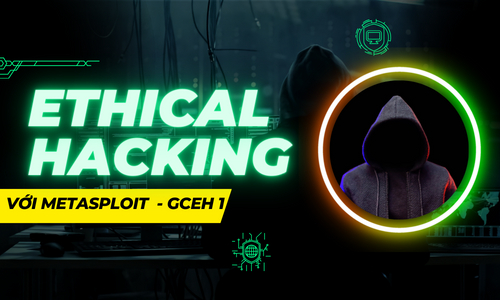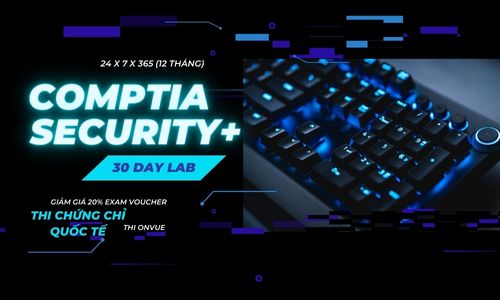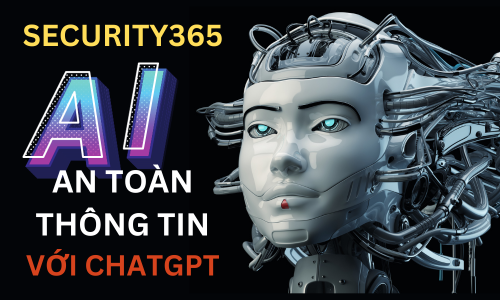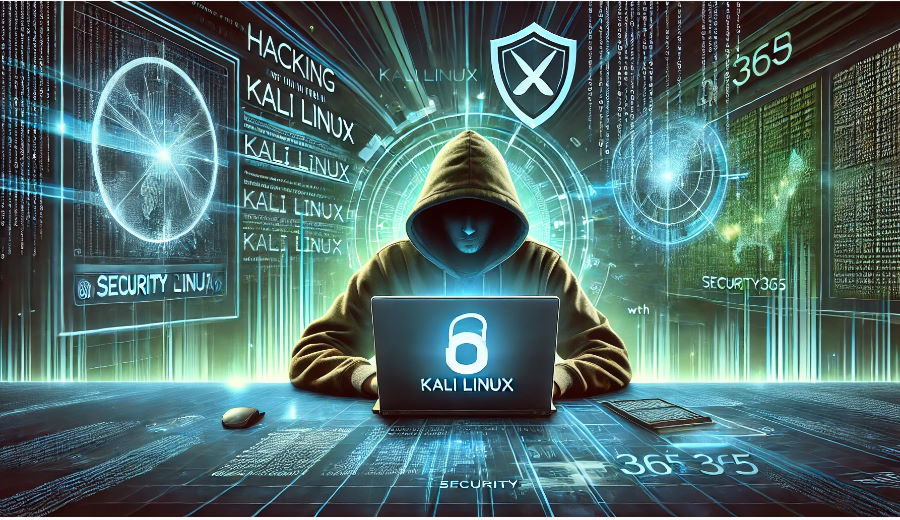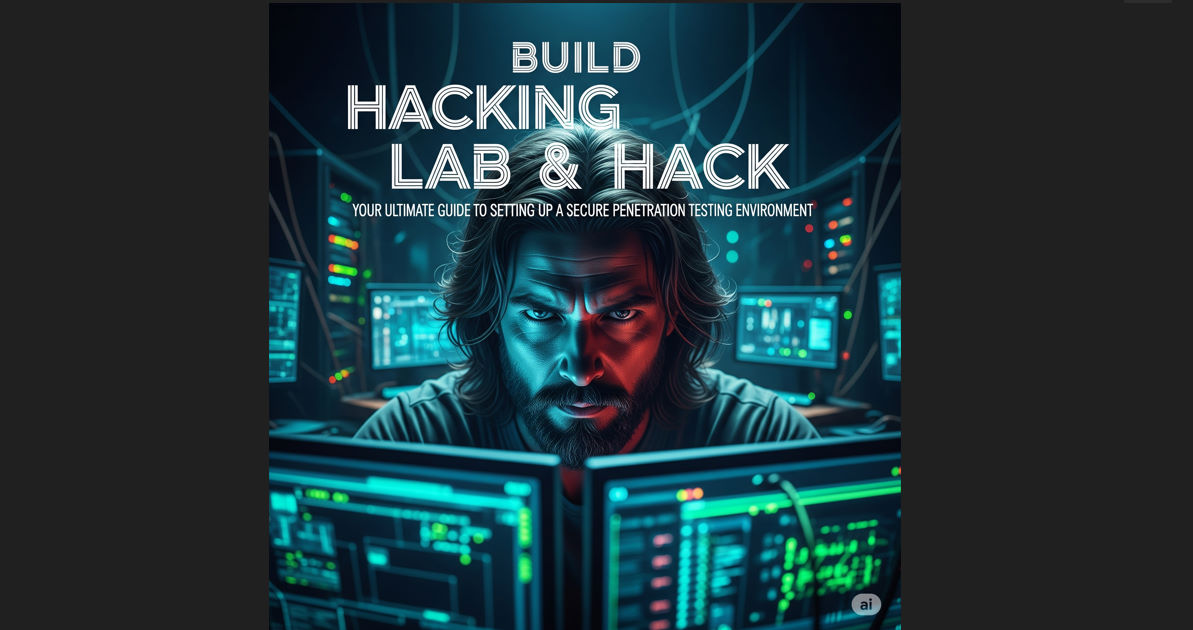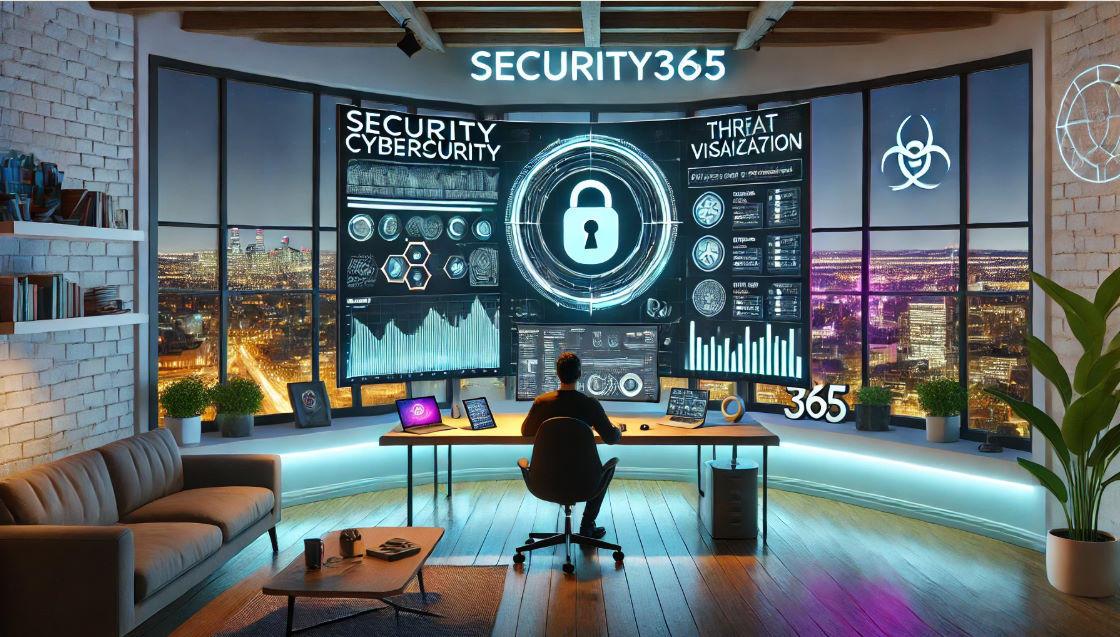CCISO - Certified Chief Information Security Officer | CCISO Certification Prepare
Chứng chỉ CCISO là một chương trình chứng nhận an ninh hàng đầu trong ngành, công nhận kinh nghiệm thực tế cần thiết để thành công ở cấp điều hành cao nhất trong lĩnh vực an ninh thông tin. Kết hợp tất cả các thành phần cần thiết cho một vị trí cấp C, chương trình CCISO tích hợp quản lý kiểm toán, quản trị, kiểm soát hệ thống thông tin, quản lý nguồn nhân lực, phát triển chương trình chiến lược và chuyên môn tài chính quan trọng để lãnh đạo một chương trình an ninh thông tin thành công cao.
Công việc của CISO quá quan trọng để có thể học hỏi thông qua thử nghiệm và sai lầm. Kỹ năng quản lý cấp điều hành không phải là những lĩnh vực nên học trong quá trình làm việc.
Tài liệu trong Chương trình CCISO giả định một sự hiểu biết sâu sắc về các chủ đề kỹ thuật và không dành nhiều thời gian cho thông tin thuần túy kỹ thuật, mà tập trung vào việc ứng dụng kiến thức kỹ thuật vào công việc hàng ngày của một giám đốc điều hành an ninh thông tin. CCISO nhằm thu hẹp khoảng cách giữa kiến thức quản lý cấp cao mà các CISO cần và kiến thức kỹ thuật mà nhiều CISO đương nhiệm và tương lai đang có. Đây có thể là một khoảng cách quan trọng khi một chuyên gia cố gắng chuyển từ vị trí quản lý cấp trung lên vai trò quản lý cấp cao, điều hành. Phần lớn kiến thức này thường được học thông qua đào tạo trong công việc, nhưng Chương trình Đào tạo CCISO có thể là chìa khóa để chuyển đổi thành công lên hàng ngũ cao nhất trong quản lý an ninh thông tin.
Domain 1: Governance and Risk Management
1. Define, Implement, Manage, and Maintain an Information Security Governance Program
- 1.1. Form of Business Organization
- 1.2. Industry
- 1.3. Organizational Maturity
2. Information Security Drivers
3. Establishing an information security management structure
- 3.1. Organizational Structure
- 3.2. Where does the CISO fit within the organizational structure
- 3.3. The Executive CISO
- 3.4. Nonexecutive CISO
4. Laws/Regulations/Standards as drivers of Organizational Policy/Standards/Procedures
5. Managing an enterprise information security compliance program
- 5.1. Security Policy
- 5.1.1. Necessity of a Security Policy
- 5.1.2. Security Policy Challenges
- 5.2. Policy Content
- 5.2.1. Types of Policies
- 5.2.2. Policy Implementation
- 5.3. Reporting Structure
- 5.4. Standards and best practices
- 5.5. Leadership and Ethics
- 5.6. EC-Council Code of Ethics
6. Introduction to Risk Management
- 3.1. Organizational Structure
- 3.2. Where does the CISO fit within the organizational structure
- 3.3. The Executive CISO
- 3.4. Nonexecutive CISO
Domain 2: Information Security Controls, Compliance, and Audit Management
1. Information Security Controls
- 1.1. Identifying the Organization’s Information Security Needs
- 1.1.1. Identifying the Optimum Information Security Framework
- 1.1.2. Designing Security Controls
- 1.1.3. Control Lifecycle Management
- 1.1.4. Control Classification
- 1.1.5. Control Selection and Implementation
- 1.1.6. Control Catalog
- 1.1.7. Control Maturity
- 1.1.8. Monitoring Security Controls
- 1.1.9. Remediating Control Deficiencies
- 1.1.10. Maintaining Security Controls
- 1.1.11. Reporting Controls
- 1.1.12. Information Security Service Catalog
2. Compliance Management
- 2.1. Acts, Laws, and Statutes
- 2.1.1. FISMA
- 2.2. Regulations
- 2.2.1. GDPR
- 2.3. Standards
- 2.3.1. ASD—Information Security Manual
- 2.3.2. Basel III
- 2.3.3. FFIEC
- 2.3.4. ISO 00 Family of Standards
- 2.3.5. NERC-CIP
- 2.3.6. PCI DSS
- 2.3.7. NIST Special Publications
- 2.3.8. Statement on Standards for Attestation Engagements No. 16 (SSAE 16)
3. Guidelines, Good and Best Practices
- 3.1. CIS
- 3.1.1. OWASP
4. Audit Management
- 4.1. Audit Expectations and Outcomes
- 4.2. IS Audit Practices
- 4.2.1. ISO/IEC Audit Guidance
- 4.2.2. Internal versus External Audits
- 4.2.3. Partnering with the Audit Organization
- 4.2.4. Audit Process
- 4.2.5. General Audit Standards
- 4.2.6. Compliance-Based Audits
- 4.2.7. Risk-Based Audits
- 4.2.8. Managing and Protecting Audit Documentation
- 4.2.9. Performing an Audit
- 4.2.10. Evaluating Audit Results and Report
- 4.2.11. Remediating Audit Findings
- 4.2.12. Leverage GRC Software to Support Audits
5. Summary
Domain 3: Security Program Management & Operations
1. Program Management
- 1.1. Defining a Security Charter, Objectives, Requirements, Stakeholders, and Strategies
- 1.1.1. Security Program Charter
- 1.1.2. Security Program Objectives
- 1.1.3. Security Program Requirements
- 1.1.4. Security Program Stakeholders
- 1.1.5. Security Program Strategy Development
- 1.2. Executing an Information Security Program
- 1.3. Defining and Developing, Managing and Monitoring the Information Security Program
- 1.3.1. Defining an Information Security Program Budget
- 1.3.2. Developing an Information Security Program Budget
- 1.3.3. Managing an Information Security Program Budget
- 1.3.4. Monitoring an Information Security Program Budget
- 1.4. Defining and Developing Information Security Program Staffing Requirements
- 1.5. Managing the People of a Security Program
- 1.5.1. Resolving Personnel and Teamwork Issues
- 1.5.2. Managing Training and Certification of Security Team Members
- 1.5.3. Clearly Defined Career Path
- 1.5.4. Designing and Implementing a User Awareness Program
- 1.6. Managing the Architecture and Roadmap of the Security Program
- 1.6.1. Information Security Program Architecture
- 1.6.2. Information Security Program Roadmap
- 1.7. Program Management and Governance
- 1.7.1. Understanding Project Management Practices
- 1.7.2. Identifying and Managing Project Stakeholders
- 1.7.3. Measuring the Effectives of Projects
- 1.8. Business Continuity Management (BCM) and Disaster Recovery Planning (DRP)
- 1.9. Data Backup and Recovery
- 1.10. Backup Strategy
- 1.11. ISO BCM Standards
- 1.11.1. Business Continuity Management (BCM)
- 1.11.2. Disaster Recovery Planning (DRP)
- 1.12. Continuity of Security Operations
- 1.12.1. Integrating the Confidentiality, Integrity and Availability (CIA) Model
- 1.13. BCM Plan Testing
- 1.14. DRP Testing
- 1.15. Contingency Planning, Operations, and Testing Programs to Mitigate Risk and Meet Service Level Agreements (SLAs)
- 1.16. Computer Incident Response
- 1.16.1. Incident Response Tools
- 1.16.2. Incident Response Management
- 1.16.3. Incident Response Communications
- 1.16.4. Post-Incident Analysis
- 1.16.5. Testing Incident Response Procedures
- 1.17. Digital Forensics
- 1.17.1. Crisis Management
- 1.17.2. Digital Forensics Life Cycle
2. Operations Management
- 2.1. Establishing and Operating a Security Operations (SecOps) Capability
- 2.2. Security Monitoring and Security Information and Event Management (SIEM)
- 2.3. Event Management
- 2.4. Incident Response Model
- 2.4.1. Developing Specific Incident Response Scenarios
- 2.5. Threat Management
- 2.6. Threat Intelligence
- 2.6.1. Information Sharing and Analysis Centers (ISAC)
- 2.7. Vulnerability Management
- 2.7.1. Vulnerability Assessments
- 2.7.2. Vulnerability Management in Practice
- 2.7.3. Penetration Testing
- 2.7.4. Security Testing Teams
- 2.7.5. Remediation
- 2.8. Threat Hunting
3. Summary
Domain 4: Information Security Core Competencies
1. Access Control
- 1.1. Authentication, Authorization, and Auditing
- 1.2. Authentication
- 1.3. Authorization
- 1.4. Auditing
- 1.5. User Access Control Restrictions
- 1.6. User Access Behavior Management
- 1.7. Types of Access Control Models
- 1.8. Designing an Access Control Plan
- 1.9. Access Administration
2. Physical Security
- 2.1. Designing, Implementing, and Managing Physical Security Program
- 2.1.1. Physical Risk Assessment
- 2.2. Physical Location Considerations
- 2.3. Obstacles and Prevention
- 2.4. Secure Facility Design
- 2.4.1. Security Operations Center
- 2.4.2. Sensitive Compartmented Information Facility
- 2.4.3. Digital Forensics Lab
- 2.4.4. Datacenter
- 2.5. Preparing for Physical Security Audits
3. Network Security
- 3.1. Network Security Assessments and Planning
- 3.2. Network Security Architecture Challenges
- 3.3. Network Security Design
- 3.4. Network Standards, Protocols, and Controls
- 3.4.1. Network Security Standards
- 3.4.2. Protocols
4. Certified Chief
- 4.1.1. Network Security Controls
- 4.2. Wireless (Wi-Fi) Security
- 4.2.1. Wireless Risks
- 4.2.2. Wireless Controls
- 4.3. Voice over IP Security
5. Endpoint Protection
- 5.1. Endpoint Threats
- 5.2. Endpoint Vulnerabilities
- 5.3. End User Security Awareness
- 5.4. Endpoint Device Hardening
- 5.5. Endpoint Device Logging
- 5.6. Mobile Device Security
- 5.6.1. Mobile Device Risks
- 5.6.2. Mobile Device Security Controls
- 5.7. Internet of Things Security (IoT)
- 5.7.1. Protecting IoT Devices
6. Application Security
- 6.1. Secure SDLC Model
- 6.2. Separation of Development, Test, and Production Environments
- 6.3. Application Security Testing Approaches
- 6.4. DevSecOps
- 6.5. Waterfall Methodology and Security
- 6.6. Agile Methodology and Security
- 6.7. Other Application Development Approaches
- 6.8. Application Hardening
- 6.9. Application Security Technologies
- 6.10. Version Control and Patch Management
- 6.11. Database Security
- 6.12. Database Hardening
- 6.13. Secure Coding Practices
7. Encryption Technologies
- 7.1. Encryption and Decryption
- 7.2. Cryptosystems
- 7.2.1. Blockchain
- 7.2.2. Digital Signatures and Certificates
- 7.2.3. PKI
- 7.2.4. Key Management
- 7.3. Hashing
- 7.4. Encryption Algorithms
- 7.5. Encryption Strategy Development
- 7.5.1. Determining Critical Data Location and Type
- 7.5.2. Deciding What to Encrypt
- 7.5.3. Determining Encryption Requirements
- 7.5.4. Selecting, Integrating, and Managing Encryption Technologies
8. Virtualization Security
- 8.1. Virtualization Overview
- 8.2. Virtualization Risks
- 8.3. Virtualization Security Concerns
- 8.4. Virtualization Security Controls
- 8.5. Virtualization Security Reference Model
9. Cloud Computing Security
- 9.1. Overview of Cloud Computing
- 9.2. Security and Resiliency Cloud Services
- 9.3. Cloud Security Concerns
- 9.4. Cloud Security Controls
- 9.5. Cloud Computing Protection Considerations
10. Transformative Technologies
- 10.1. Artificial Intelligence
- 10.2. Augmented Reality
- 10.3. Autonomous SOC
- 10.4. Dynamic Deception
- 10.5. Software-Defined Cybersecurity
11. Summary
Domain 5: Strategic Planning, Finance, Procurement and Vendor Management
1. Strategic Planning
- 1.1. Understanding the Organization
- 1.1.1. Understanding the Business Structure
- 1.1.2. Determining and Aligning Business and Information Security Goals
- 1.1.3. Identifying Key Sponsors, Stakeholders, and Influencers
- 1.1.4. Understanding Organizational Financials
- 1.2. Creating an Information Security Strategic Plan
- 1.2.1. Strategic Planning Basics
- 1.2.2. Alignment to Organizational Strategy and Goals
- 1.2.3. Defining Tactical Short, Medium, and Long-Term Information Security Goals
- 1.2.4. Information Security Strategy Communication
- 1.2.5. Creating a Culture of Security
2. Designing, Developing, and Maintaining an Enterprise Information Security Program
- 2.1. Ensuring a Sound Program Foundation
- 2.2. Architectural Views
- 2.3. Creating Measurements and Metrics
- 2.4. Balanced Scorecard
- 2.5. Continuous Monitoring and Reporting Outcomes
- 2.6. Continuous Improvement
- 2.7. Information Technology Infrastructure Library (ITIL) Continual Service Improvement (CSI)
3. Understanding the Enterprise Architecture (EA)
- 3.1. EA Types
- 3.1.1. The Zachman Framework
- 3.1.2. The Open Group Architecture Framework (TOGAF)
- 3.1.3. Sherwood Applied Business Security Architecture (SABSA)
- 3.1.4. Federal Enterprise Architecture Framework (FEAF)
4. Finance
- 4.1. Understanding Security Program Funding
- 4.2. Analyzing, Forecasting, and Developing a Security Budget
- 4.2.1. Resource Requirements
- 4.2.2. Define Financial Metrics
- 4.2.3. Technology Refresh
- 4.2.4. New Project Funding
- 4.2.5. Contingency Funding
- 4.3. Managing the information Security Budget
- 4.3.1. Obtain Financial Resources
- 4.3.2. Allocate Financial Resources
- 4.3.3. Monitor and Oversight of Information Security Budget
- 4.3.4. Report Metrics to Sponsors and Stakeholders
- 4.3.5. Balancing the Information Security Budget
5. Procurement
- 5.1. Procurement Program Terms and Concepts
- 5.1.1. Statement of Objectives (SOO)
- 5.1.2. Statement of Work (SOW)
- 5.1.3. Total Cost of Ownership (TCO)
- 5.1.4. Request for Information (RFI)
- 5.1.5. Request for Proposal (RFP)
- 5.1.6. Master Service Agreement (MSA)
- 5.1.7. Service Level Agreement (SLA)
- 5.1.8. Terms and Conditions (T&C)
- 5.2. Understanding the Organization’s Procurement Program
- 5.2.1. Internal Policies, Processes, and Requirements
- 5.2.2. External or Regulatory Requirements
- 5.2.3. Local Versus Global Requirements
- 5.3. Procurement Risk Management
- 5.3.1. Standard Contract Language
6. Vendor Management
- 6.1. Understanding the Organization’s Acquisition Policies and Procedures
- 6.1.1. Procurement Life cycle
- 6.2. Applying Cost-Benefit Analysis (CBA) During the Procurement Process5
- 6.3. Vendor Management Policies
- 6.4. Contract Administration Policies
- 6.4.1. Service and Contract Delivery Metrics
- 6.4.2. Contract Delivery Reporting
- 6.4.3. Change Requests
- 6.4.4. Contract Renewal
- 6.4.5. Contract Closure
- 6.5. Delivery Assurance
- 6.5.1. Validation of Meeting Contractual Requirements
- 6.5.2. Formal Delivery Audits
- 6.5.3. Periodic Random Delivery Audits
- 6.5.4. Third-Party Attestation Services (TPRM)
7. Summary
Bài viết cùng danh mục
Danh mục bài viết
- Cảnh Báo Bảo Mật
- Hacking & Pentest
- Security365
- Pentest Với Metasploit
- Bài Giảng - Hướng Dẫn - Thực Hành
- CompTIA SECURITY+
- Học Liệu An Toàn Thông Tin Quốc Tế
- LỊCH KHAI GIẢNG
- Tủ Sách Security365
- Exam Voucher Thi Chứng Chỉ Quốc Tế
- Thao Trường Mạng
- CEH MASTER
- Hacking Với Kali Linux
- ExamPrep
- CompTIA
- CPENT
- CHFI v11
- CEH v13
